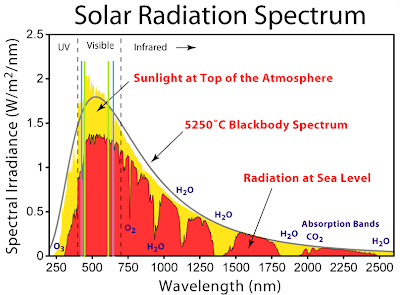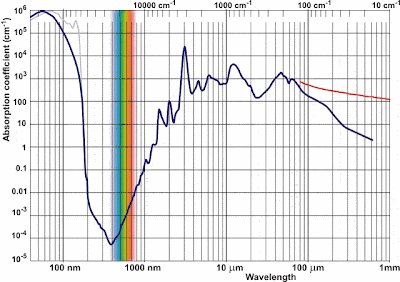 I'd like to start a short series of posts on what I'm doing this summer.
Like most all of the first year physics graduate students, I've found a
research group at Cornell
for the summer, and if everything goes well, I'll continue working with
them after the summer is done. This is good for three reasons. First,
I'm getting paid, so I can do things like pay rent. I'm not all about
the money, but having a place to live is a big deal to me. Second, I'm
getting a chance to explore a new area of research, with limited
expectation of commitment on my part. Third, if everything works out,
I've found the group I'll be working with the for the next 4-6 years.
I'd like to spend a few posts here on The Virtuosi discussing first the
physics I'm considering, and then what I actually do. Today I'm going to
talk about the most exciting sounding piece of my work,
cryopreservation. What do we mean when we talk about
cryopreservation? For many of us our first thought may be Han Solo
frozen in carbonite. This is the basic idea. Cryopreservation is the
freezing biological samples, and thawing them, while they retain
biological viability. At least, that's the idea. At the moment,
cryopreservation is the freezing and thawing biological samples, and
hoping that some of them remain biologically viable. Even though the
methods have been in development since the 1950s, successes are limited
even for such simple objects as spermatozoa or oocytes (sperm & eggs),
let alone larger and much more complicated objects like Harrison Ford.
Why would we want to cryopreserve something? (and did I just invent a
verb?) The idea is fairly simple. If we cool down biological samples,
biological functions slow down or completely stop. The hope is that if
we get samples sufficiently cold, we can suspend biological (and all
other) functions indefinitely. This would allow indefinitely
preservation of many things. Eggs and sperm for reproductive purposes
(both human and other animals), plant seeds, blood (for transfusions),
vaccines, drugs (no more pesky shelf life for pharmaceuticals until you
unfreeze them). The perfect frozen strawberries. The list of
possibilities is huge. And according to my dictionary, cryopreserve is a
well established verb. Why is it so hard? It's easy to stick
something in the freezer. That seems to work on my food. However, it
doesn't work well on biological samples. If we just stick them in the
freezer many of the cells are damaged irreparably. We'd like to know
why. To answer this we're going to need to take a step down to the
cellular level. I'm not a biologist, so I'm not going to attempt to
explain cell structure to you. For our current purposes it is sufficient
to know that cells have an inside and an outside (then, doesn't most
everything?), separated by a semi-permeable membrane, and that both
inside and outside of the cells there is water. We need to take a brief
detour now into the realm of water. Water is a fantastically amazing
substance, and I'm not just saying that because we (and most/all life on
earth) would all die without it. Water is fascinating from a pure
physics perspective. Now, when I refer to water, I'm going to use it to
mean H2O, in any phase. Colloquially we usually mean liquid water when
we say water, we say ice we mean crystalline frozen water, and steam
when we mean vaporous water. I'm going to call all of these things
'water' and I will specify what phase I mean by saying 'frozen, liquid,
vapor'. I will refer to frozen crystalline water as ice. So what's
so fascinating about water? Well, first off, it is one of the only
substances that expands when it crystallizes (forms ice). Most objects
become more dense when they transform from a liquid to a solid. Water
doesn't. This is why ice floats. There are many other fascinating
aspects of water, for example, that liquid water is most dense at 4 C.
This is mostly responsible for why fish survive in the winter. Ice forms
on top of lakes/rivers, and the 4C water stays at the bottom of the lake
because it is the densest. But for our purposes, what we really need to
know is that water expands on forming ice. When we freeze our cells,
this expansion of water can cause massive problems. Everything in the
cell besides the water contracts on cooling. The water crystallizes and
expands (by about 9%). If you've ever frozen something liquid in a very
full container and seeing it split the container open, the idea is very
similar. The intracellular water can crystallize and split open the cell
membrane. Once you've split the cell membrane, there's no way (that I've
seen) to successfully revive that cell. It turns out that ice formation
outside the cell isn't such a big deal, it usually just pushes the cells
around. The water in the cells is what is most likely to cause damage to
our biological tissues when we freeze them. Early
studies
showed survival rates between 10^-6% and \~50%. Those are not good
odds. How do we prevent this damage? There are two methods currently
in practice to prevent damage on cooling. The first of these is slow
cooling. It was discovered that if you cool your sample at a rate of \~1
C/min very little to no intracellular ice forms, though intercellular
ice still forms. The water in and between cells is not pure water, but
contains all kinds of things (proteins, salts, etc). This means that it
starts to crystallize not at 0 C, but somewhere lower. This is the
reason we salt sidewalks in the winter (at least, in places where we get
snow). The salt lowers the freezing point of water, causing the ice/snow
to melt even if the temperature is below 0 C. Of course, if the
temperature gets low enough it will still freeze. So our intra and
intercellular water crystallizes below 0 C. It turns out that the
intercellular water starts to crystallize before the intracellular
water. This means we have ice formation outside the cell while the water
inside the cell is still liquid. Earlier I told you that we needed to
know that the membrane of a cell was semi-permiable. This is why. Some
water diffuses through the membrane. At room temperature, the liquid
water outside the cells diffuses into the cell at the same rate that the
liquid water inside the cell diffuses out of the cell. Now, if we start
crystallizing the intercellular water, there will be less liquid water
moving into the cell. But since the intracellular water is still liquid
it will still be diffusing out at the same rate. This results in a
partial dehydration of the cell, more liquid water moving out than in.
This is a basic example of osmotic pressure. With less liquid water in
the cell, when it does crystallize, the ice crystals that form are
smaller, and less likely to damage the cell membrane. This method is not
perfect, because extreme dehydration of cells will also damage them, due
to cell shrinkage and extremely high solute concentration (this
phenomena is called osmotic shock). The second method that is considered
is ultrafast cooling. Here we must take another diversion into physics
land. You may have noticed my emphasis on ice as crystalline water. It
turns out that when you freeze water, forming a crystal is not the only
option available to it (and we're not even going to discuss the variety
of crystals it can form). It can also form a glass. Now, if you're not a
physicist, you're probably not familiar with glass as a type of
substance, but rather as the thing you put in your windows and drink out
of. A glass, to a physicist, is, essentially, a solid without long range
order. The best way to think about of it would be to imagine you took
liquid water and stopped time for the water (not freezing it in the
conventional sense). That's a glass. It looks like liquid water, has the
same density as liquid water, but is a solid. It's a very strange
concept, and I'm going to save a more thorough discussion for a later
post, because that takes me into a whole different research area I'm
working on this summer. For our purposes, it is sufficient to know that
we can reach a solid state of water at cold temperatures that has the
same density as liquid water. Based on our discussion above, the
advantages should be immediately obvious. Without the expansion of ice
to worry about, the solidification of water is nowhere near as damaging
to our cells. By vitrifying (turning to a glass) our liquid water, we
should see much less damage to the cells. To achieve vitrification, you
have to cool down the cells much faster (depending on the substance
>1000 C/min). How do we do this? The conventional method is to dunk the
cells directly into liquid nitrogen, or put them into a very cold stream
of gas (around liquid nitrogen temperatures). I should note that I'm
skipping over a very large field of putting cryopreservants into cells
and freezing them. However, the effect of cryopreservants is to prevent
ice crystallization, and so this is just a method of vitrification. It
just makes it easier to achieve by lowering the rate you have to cool
the sample at. So that's it? It may seem like that's the solution.
Cooling fast enough to vitrify the liquid water, and we'll get good
cryopreservation of our cells. The rest is just technology development.
Unfortunately, it's not that easy. It turns out that warming is a harder
problem to solve than cooling. When we warm up glassy water, it turns
back into supercooled liquid water (liquid water way below the freezing
point of water). I'll discuss this in more detail in my next post on my
research. So now we've got really cold water, and it will start forming
ice, unless we warm up fast enough to prevent that, very similar to how
we had to cool down very quickly to prevent ice formation. The problem
is, experiments suggest that 'fast enough' is at least 10-100 times
faster than cooling down. Not only that, but on cooling down, we're
really trying to get very very cold. On warming up, we don't want to get
much over room temperature, otherwise we'll fry the cells. So we have to
warm really really quickly, in an extremely well controlled manner. So
far, this has proved very challenging to do. A recent study with mouse
oocytes achieved a \~90% success rate with their freezing/thawing
cycles, and that is the best that I've seen. 90% is pretty good, but
we'd like to do better. So what's your research this summer? It
turns out that my research isn't so much into cryopreservation. As I
will talk about next post, it is more into the physics of
crystallization and glass formation of aqueous substances, where there
is a lot of fundamental physics still to be understood. However, one of
the most exciting eventual applications is cryopreservation. We've
already developed a fast cooling system, and we're working on a fast
warming system that will allow us to study crystallization and glass
formation, and hopefully extend the techniques we develop into the field
of cryopreservation. That's way cool! Yes. Yes it is. Even if that
is a horrible pun. Note: The question and answer format was inspired by
Chad over at Uncertain Principles
and his research blogging.
I'd like to start a short series of posts on what I'm doing this summer.
Like most all of the first year physics graduate students, I've found a
research group at Cornell
for the summer, and if everything goes well, I'll continue working with
them after the summer is done. This is good for three reasons. First,
I'm getting paid, so I can do things like pay rent. I'm not all about
the money, but having a place to live is a big deal to me. Second, I'm
getting a chance to explore a new area of research, with limited
expectation of commitment on my part. Third, if everything works out,
I've found the group I'll be working with the for the next 4-6 years.
I'd like to spend a few posts here on The Virtuosi discussing first the
physics I'm considering, and then what I actually do. Today I'm going to
talk about the most exciting sounding piece of my work,
cryopreservation. What do we mean when we talk about
cryopreservation? For many of us our first thought may be Han Solo
frozen in carbonite. This is the basic idea. Cryopreservation is the
freezing biological samples, and thawing them, while they retain
biological viability. At least, that's the idea. At the moment,
cryopreservation is the freezing and thawing biological samples, and
hoping that some of them remain biologically viable. Even though the
methods have been in development since the 1950s, successes are limited
even for such simple objects as spermatozoa or oocytes (sperm & eggs),
let alone larger and much more complicated objects like Harrison Ford.
Why would we want to cryopreserve something? (and did I just invent a
verb?) The idea is fairly simple. If we cool down biological samples,
biological functions slow down or completely stop. The hope is that if
we get samples sufficiently cold, we can suspend biological (and all
other) functions indefinitely. This would allow indefinitely
preservation of many things. Eggs and sperm for reproductive purposes
(both human and other animals), plant seeds, blood (for transfusions),
vaccines, drugs (no more pesky shelf life for pharmaceuticals until you
unfreeze them). The perfect frozen strawberries. The list of
possibilities is huge. And according to my dictionary, cryopreserve is a
well established verb. Why is it so hard? It's easy to stick
something in the freezer. That seems to work on my food. However, it
doesn't work well on biological samples. If we just stick them in the
freezer many of the cells are damaged irreparably. We'd like to know
why. To answer this we're going to need to take a step down to the
cellular level. I'm not a biologist, so I'm not going to attempt to
explain cell structure to you. For our current purposes it is sufficient
to know that cells have an inside and an outside (then, doesn't most
everything?), separated by a semi-permeable membrane, and that both
inside and outside of the cells there is water. We need to take a brief
detour now into the realm of water. Water is a fantastically amazing
substance, and I'm not just saying that because we (and most/all life on
earth) would all die without it. Water is fascinating from a pure
physics perspective. Now, when I refer to water, I'm going to use it to
mean H2O, in any phase. Colloquially we usually mean liquid water when
we say water, we say ice we mean crystalline frozen water, and steam
when we mean vaporous water. I'm going to call all of these things
'water' and I will specify what phase I mean by saying 'frozen, liquid,
vapor'. I will refer to frozen crystalline water as ice. So what's
so fascinating about water? Well, first off, it is one of the only
substances that expands when it crystallizes (forms ice). Most objects
become more dense when they transform from a liquid to a solid. Water
doesn't. This is why ice floats. There are many other fascinating
aspects of water, for example, that liquid water is most dense at 4 C.
This is mostly responsible for why fish survive in the winter. Ice forms
on top of lakes/rivers, and the 4C water stays at the bottom of the lake
because it is the densest. But for our purposes, what we really need to
know is that water expands on forming ice. When we freeze our cells,
this expansion of water can cause massive problems. Everything in the
cell besides the water contracts on cooling. The water crystallizes and
expands (by about 9%). If you've ever frozen something liquid in a very
full container and seeing it split the container open, the idea is very
similar. The intracellular water can crystallize and split open the cell
membrane. Once you've split the cell membrane, there's no way (that I've
seen) to successfully revive that cell. It turns out that ice formation
outside the cell isn't such a big deal, it usually just pushes the cells
around. The water in the cells is what is most likely to cause damage to
our biological tissues when we freeze them. Early
studies
showed survival rates between 10^-6% and \~50%. Those are not good
odds. How do we prevent this damage? There are two methods currently
in practice to prevent damage on cooling. The first of these is slow
cooling. It was discovered that if you cool your sample at a rate of \~1
C/min very little to no intracellular ice forms, though intercellular
ice still forms. The water in and between cells is not pure water, but
contains all kinds of things (proteins, salts, etc). This means that it
starts to crystallize not at 0 C, but somewhere lower. This is the
reason we salt sidewalks in the winter (at least, in places where we get
snow). The salt lowers the freezing point of water, causing the ice/snow
to melt even if the temperature is below 0 C. Of course, if the
temperature gets low enough it will still freeze. So our intra and
intercellular water crystallizes below 0 C. It turns out that the
intercellular water starts to crystallize before the intracellular
water. This means we have ice formation outside the cell while the water
inside the cell is still liquid. Earlier I told you that we needed to
know that the membrane of a cell was semi-permiable. This is why. Some
water diffuses through the membrane. At room temperature, the liquid
water outside the cells diffuses into the cell at the same rate that the
liquid water inside the cell diffuses out of the cell. Now, if we start
crystallizing the intercellular water, there will be less liquid water
moving into the cell. But since the intracellular water is still liquid
it will still be diffusing out at the same rate. This results in a
partial dehydration of the cell, more liquid water moving out than in.
This is a basic example of osmotic pressure. With less liquid water in
the cell, when it does crystallize, the ice crystals that form are
smaller, and less likely to damage the cell membrane. This method is not
perfect, because extreme dehydration of cells will also damage them, due
to cell shrinkage and extremely high solute concentration (this
phenomena is called osmotic shock). The second method that is considered
is ultrafast cooling. Here we must take another diversion into physics
land. You may have noticed my emphasis on ice as crystalline water. It
turns out that when you freeze water, forming a crystal is not the only
option available to it (and we're not even going to discuss the variety
of crystals it can form). It can also form a glass. Now, if you're not a
physicist, you're probably not familiar with glass as a type of
substance, but rather as the thing you put in your windows and drink out
of. A glass, to a physicist, is, essentially, a solid without long range
order. The best way to think about of it would be to imagine you took
liquid water and stopped time for the water (not freezing it in the
conventional sense). That's a glass. It looks like liquid water, has the
same density as liquid water, but is a solid. It's a very strange
concept, and I'm going to save a more thorough discussion for a later
post, because that takes me into a whole different research area I'm
working on this summer. For our purposes, it is sufficient to know that
we can reach a solid state of water at cold temperatures that has the
same density as liquid water. Based on our discussion above, the
advantages should be immediately obvious. Without the expansion of ice
to worry about, the solidification of water is nowhere near as damaging
to our cells. By vitrifying (turning to a glass) our liquid water, we
should see much less damage to the cells. To achieve vitrification, you
have to cool down the cells much faster (depending on the substance
>1000 C/min). How do we do this? The conventional method is to dunk the
cells directly into liquid nitrogen, or put them into a very cold stream
of gas (around liquid nitrogen temperatures). I should note that I'm
skipping over a very large field of putting cryopreservants into cells
and freezing them. However, the effect of cryopreservants is to prevent
ice crystallization, and so this is just a method of vitrification. It
just makes it easier to achieve by lowering the rate you have to cool
the sample at. So that's it? It may seem like that's the solution.
Cooling fast enough to vitrify the liquid water, and we'll get good
cryopreservation of our cells. The rest is just technology development.
Unfortunately, it's not that easy. It turns out that warming is a harder
problem to solve than cooling. When we warm up glassy water, it turns
back into supercooled liquid water (liquid water way below the freezing
point of water). I'll discuss this in more detail in my next post on my
research. So now we've got really cold water, and it will start forming
ice, unless we warm up fast enough to prevent that, very similar to how
we had to cool down very quickly to prevent ice formation. The problem
is, experiments suggest that 'fast enough' is at least 10-100 times
faster than cooling down. Not only that, but on cooling down, we're
really trying to get very very cold. On warming up, we don't want to get
much over room temperature, otherwise we'll fry the cells. So we have to
warm really really quickly, in an extremely well controlled manner. So
far, this has proved very challenging to do. A recent study with mouse
oocytes achieved a \~90% success rate with their freezing/thawing
cycles, and that is the best that I've seen. 90% is pretty good, but
we'd like to do better. So what's your research this summer? It
turns out that my research isn't so much into cryopreservation. As I
will talk about next post, it is more into the physics of
crystallization and glass formation of aqueous substances, where there
is a lot of fundamental physics still to be understood. However, one of
the most exciting eventual applications is cryopreservation. We've
already developed a fast cooling system, and we're working on a fast
warming system that will allow us to study crystallization and glass
formation, and hopefully extend the techniques we develop into the field
of cryopreservation. That's way cool! Yes. Yes it is. Even if that
is a horrible pun. Note: The question and answer format was inspired by
Chad over at Uncertain Principles
and his research blogging.













